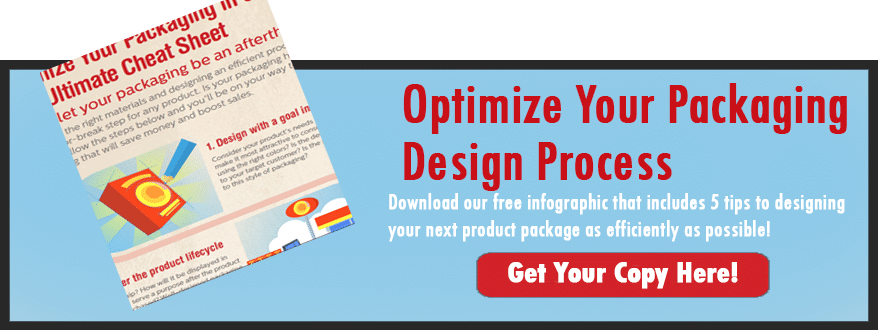How Online Retailers Benefit From Flexible Packaging
Packaging Materials | Environment | The Business of Packaging | Shipping Protection | Food Packaging
The world of product packaging is transforming, and it’s important for online retailers to stay current in this area if they’re looking to achieve continuous business success. Flexible packaging is not a casual buzzword or a passing trend, but rather an increasingly popular means of deriving greater value and benefit from the product packaging process.
As various industries employ flexible packaging for their products to reap major competitive advantages, its prominence grows. For online retailers especially, the decision to adopt it can be a significant asset. Because these retailers deliver products to their customers through shipping methods exclusively, they must be particularly focused on issues like product protection and shipping costs. Here are three critical ways that flexible packaging can positively impact business for online retailers.
Get Your Free Packaging Design Cheat Sheet
Uncover 5 actionable tips to start optimizing your packaging for efficiency.
1. Superior Product Protection
Forrester research firm has predicted that online retail sales in the United States will reach $500 billion by 2020. This is fantastic news for online retailers but it also brings its fair share of business challenges, not the least of which is optimizing the product packaging process. If your method of packaging is not supporting strong product protection you risk transporting and/or delivering damaged items. This can be highly problematic for three fundamental reasons:
- It incurs extra costs for returns, reprocessing and redelivery.
- It erodes brand loyalty and consumer trust.
- Damaged packaging for items like liquids can impact other products in transport if the contents spill out.
The good news is that flexible packaging makes it much easier to overcome these product protection challenges. Whether you need a solution that safeguards and preserves perishables, resists the threat of tears and punctures or offers tamper-proof features, there is a plethora of flexible packaging options to facilitate these durability components.
This is a distinctly attractive benefit for e-commerce stores that sell food online. A number of flexible packaging solutions employ materials that have the power to control elements such as moisture, air, temperature and light. One of the best examples is the use of food pouches, which feature multilayer polypropylene and laminate materials for improved protection and performance. Pouches can be designed as gusseted, tubular, lay-flat and/or resealable, and they encompass properties like printability and resistance to fog.
Certain types of flexible packaging, like polyolefin shrink film, consist of FDA-approved food-grade materials. These high-quality options enable you to ensure safe, contaminant-free product packaging that prioritizes consumer health and safety, which is key to elevating and maintaining a positive brand image.
2. Reduced Transportation Costs
Flexible packaging is inarguably lighter in weight and less expensive to transport than its rigid counterparts. According to the Flexible Packaging Association (FPA), advancements made in the areas of material innovation and production processes have reduced the weight of some flexible packages by up to 50%. In addition to weight reduction, flexible packaging also allows for space-saving opportunities, which means that greater ratios of product can be shipped using less fuel and energy.
Here are some eye-opening comparisons for perspective:
- Flexible pouches requires just 1.5 pounds of flexible plastic to deliver up to 10 gallons of liquid (juice, soda, water, etc.), as opposed to the need for at least three pounds of aluminum to move the same amount of product.
- Transportation receptacles like boxes or glass jars take up hugely disproportionate space over flexible options like pouches. It would take 25 more truckloads to transport product in glass jars than to move the same product in flexible pouches.
Aside from improving environmental outcomes, the decreased weight and space requirements enabled by flexible packaging can save online retailers immensely on shipping and transportation costs. Companies have the potential to move more product with fewer trucks, planes and operating personnel, which makes this packaging option a much more affordable one to employ in both domestic and international shipping and distribution situations.
3. Enhanced Environmental Friendliness
A primary advantage that’s typically associated with the use of flexible packaging is its conduciveness to waste reduction. Many flexible packaging options minimize material waste not only for retailers, but also their consumers. And since this benefit impacts landfills in an optimistic way, the advantages extend to Earth’s population at large.
Sustainability has certainly been an increasing topic of interest among modern consumers, which puts the onus on retailers to demonstrate environmental consciousness. Flexible packaging is a top choice for reducing a company’s ecological footprint because it reduces resource consumption and waste, requires less energy to implement, generates a mere fraction of the production-related CO2 emissions of other packaging options, fosters recyclability, promotes more sustainable end-of-life options and minimizes the environmental impacts of transportation by necessitating less fuel and air pollution.
The Sustainable Packaging Alliance (SPA) has determined that in order for a package to be considered sustainable, it must be effective, efficient, cyclic and safe. This means it should protect its contents throughout the supply chain while supporting informed and responsible consumption; leverage packaging lines and machinery designed to utilize materials as efficiently as possible; employ materials that are continuously cycled through natural or technical systems to minimize degradation or the use of upgrading additives; and avoid posing any risk to human health or the planet.
By employing flexible packaging options that source sustainable materials, you can attract a growing demographic of environmentally-conscious consumers while saving on production and shipping costs. It’s important to work with suppliers who minimize or eliminate the use of toxic chemicals and carcinogens, and to choose leaner packaging methods that reduce freight implications and greenhouse gas emissions.
Advance Your Packaging Design
There’s no denying that flexible packaging lends itself to a myriad of competitive advantages for all types of consumer packaged goods (CPG) companies, but now more than ever, it’s crucial to understand how these benefits directly impact online retailers and help improve their packaging experience.
From exceeding expectations for product protection to minimizing transportation costs and reducing your ecological footprint, the gains derived from adopting flexible packaging solutions should not be ignored. Your business and consumers deserve the best packaging options on the market today.
Interested in finding how to get started with optimizing your packaging design process? Take the first step by accessing our free packaging efficiency cheat sheet.
About David Roberge
I am grateful to be part of the outstanding Industrial Packaging team. I am able to hang out with some of the most knowledgeable folks in the packaging industry. I feel even luckier that I am able to share that knowledge with you. I love learning, hiking, and growing people and teams both personally and professionally, and helping companies grow better.




